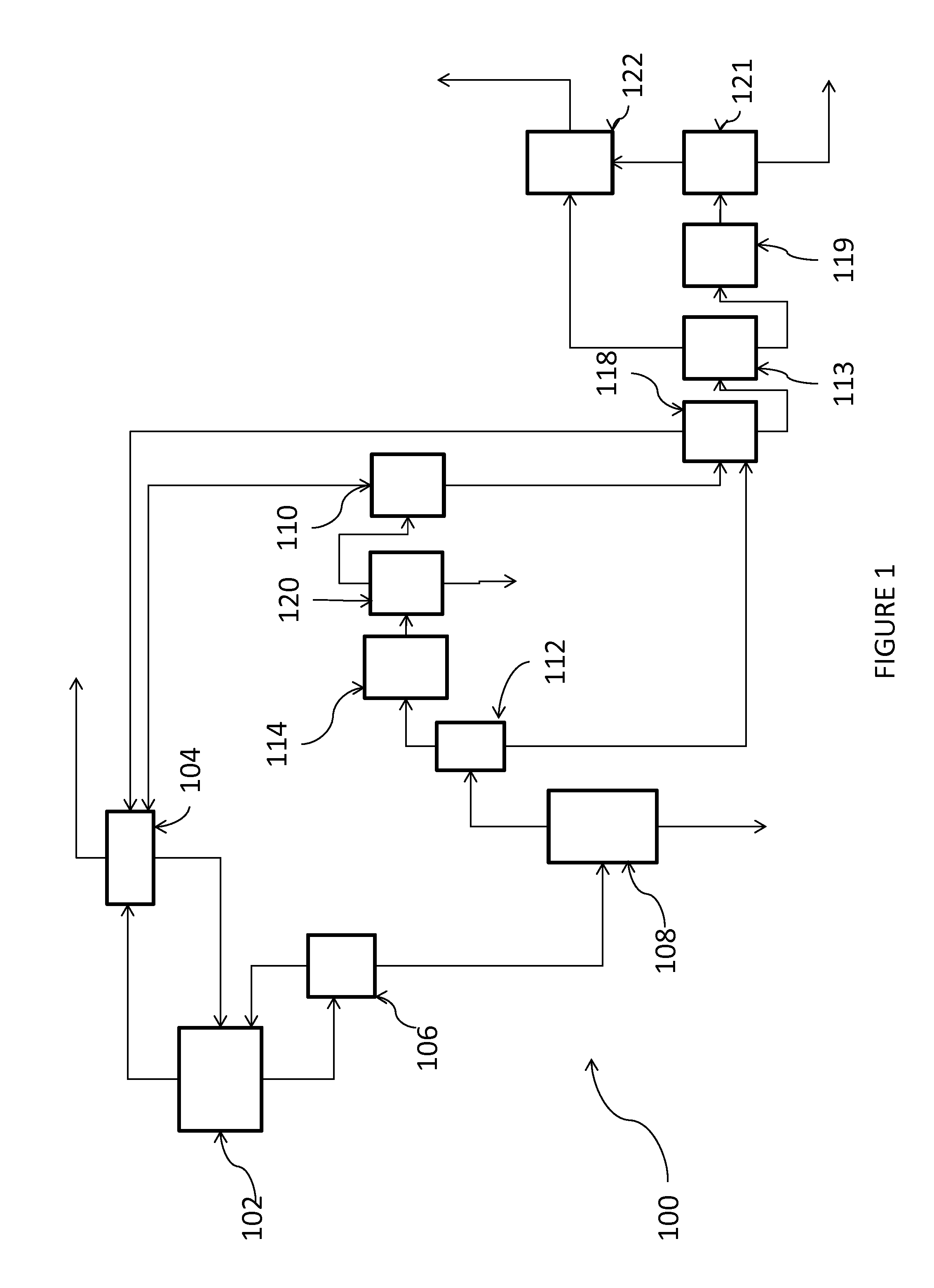Process for the production of chlorinated propenes
a chlorinated propene and chlorinated propene technology, which is applied in the field of chlorinated propene production processes, can solve the problems of limited commercial availability of chlorinated propenes, prohibitively high cost, and difficult removal and/or reaction to produce undesirable effects, and achieve the effect of improving process productivity
- Summary
- Abstract
- Description
- Claims
- Application Information
AI Technical Summary
Benefits of technology
Problems solved by technology
Method used
Image
Examples
example 1
[0069]50 mL 123-trichloropropane and 500 mg dimethyl 2,2′-azobis(2-methylpropionate) are added to a tubular reactor at a pressure of 150 psig. The reactor is sealed and Cl2 flow started (30% v / v, 200 sccm). The reactor is then heated to 70° C. After 200 min at 70° C., 23% conversion of the TCP is observed, with the product stream comprising 1,1,2,3-tetrachloropropane, 1,2,2,3-tetrachloropropane, 1,1,2,2,3-pentachloropropane, and 1,1,2,3,3-pentachloropropane (11233), with selectivities of 59.7%, 37.2%, 2.0%, and 1.2% respectively. The 1,1,2,3-tetrachloropropane is then separated from the product mixture and the reactor purged.
[0070]Carbon tetrachloride (45 mL) is added to the reactor and the reactor sealed and pressurized to 150 psi using Cl2 (30% in N2). Additional Cl2 is added for ˜20 minutes and then the reactor is heated to 70° C. The reactor was sealed (reactor pressure ˜150 psig) and a mixture of the 1,2,2,3-tetrachloropropane (1223) (3 mL) provided as described above, CCl4 (7 ...
PUM
| Property | Measurement | Unit |
|---|---|---|
| temperatures | aaaaa | aaaaa |
| pressures | aaaaa | aaaaa |
| pressures | aaaaa | aaaaa |
Abstract
Description
Claims
Application Information
 Login to View More
Login to View More - R&D
- Intellectual Property
- Life Sciences
- Materials
- Tech Scout
- Unparalleled Data Quality
- Higher Quality Content
- 60% Fewer Hallucinations
Browse by: Latest US Patents, China's latest patents, Technical Efficacy Thesaurus, Application Domain, Technology Topic, Popular Technical Reports.
© 2025 PatSnap. All rights reserved.Legal|Privacy policy|Modern Slavery Act Transparency Statement|Sitemap|About US| Contact US: help@patsnap.com



